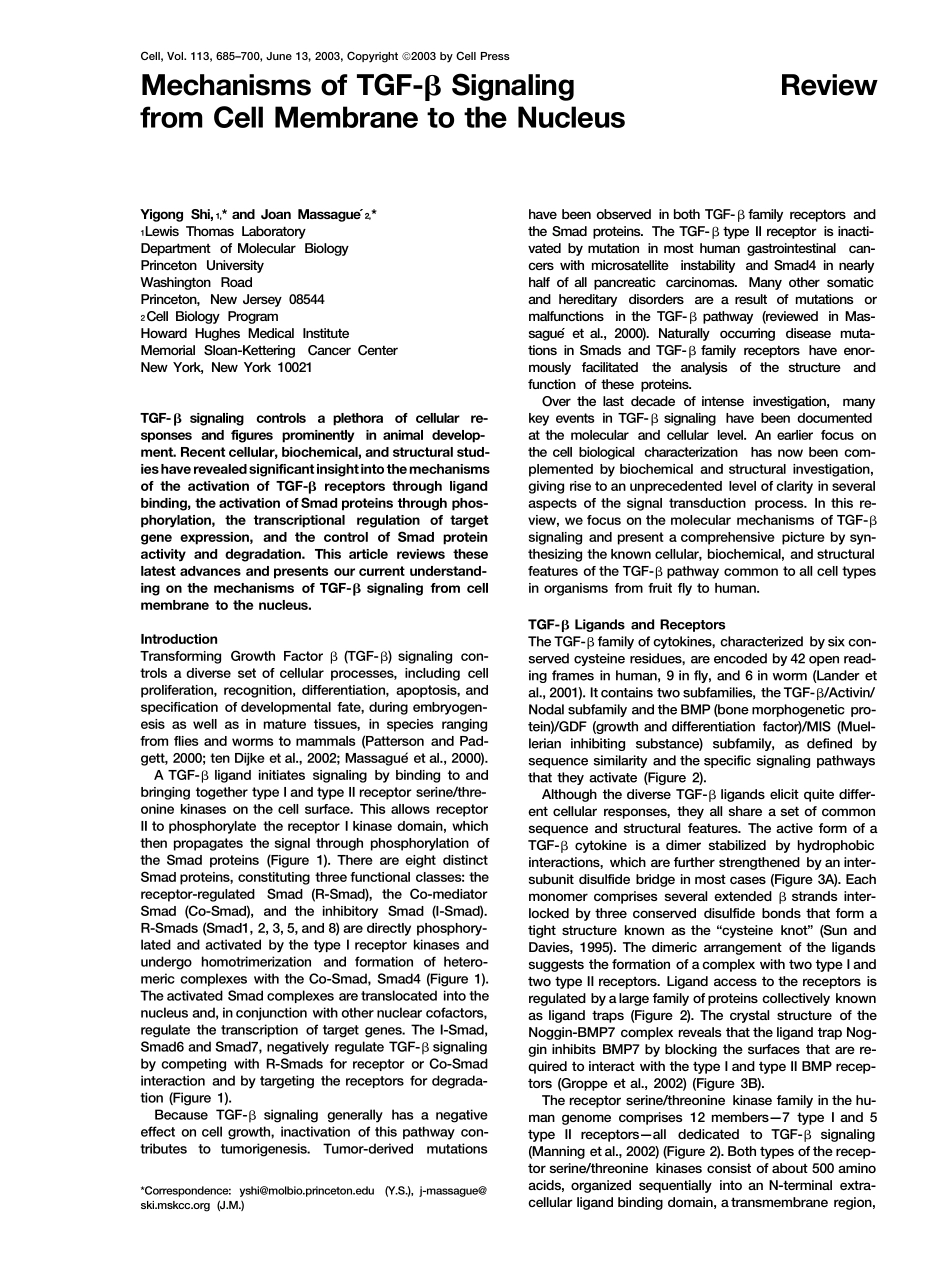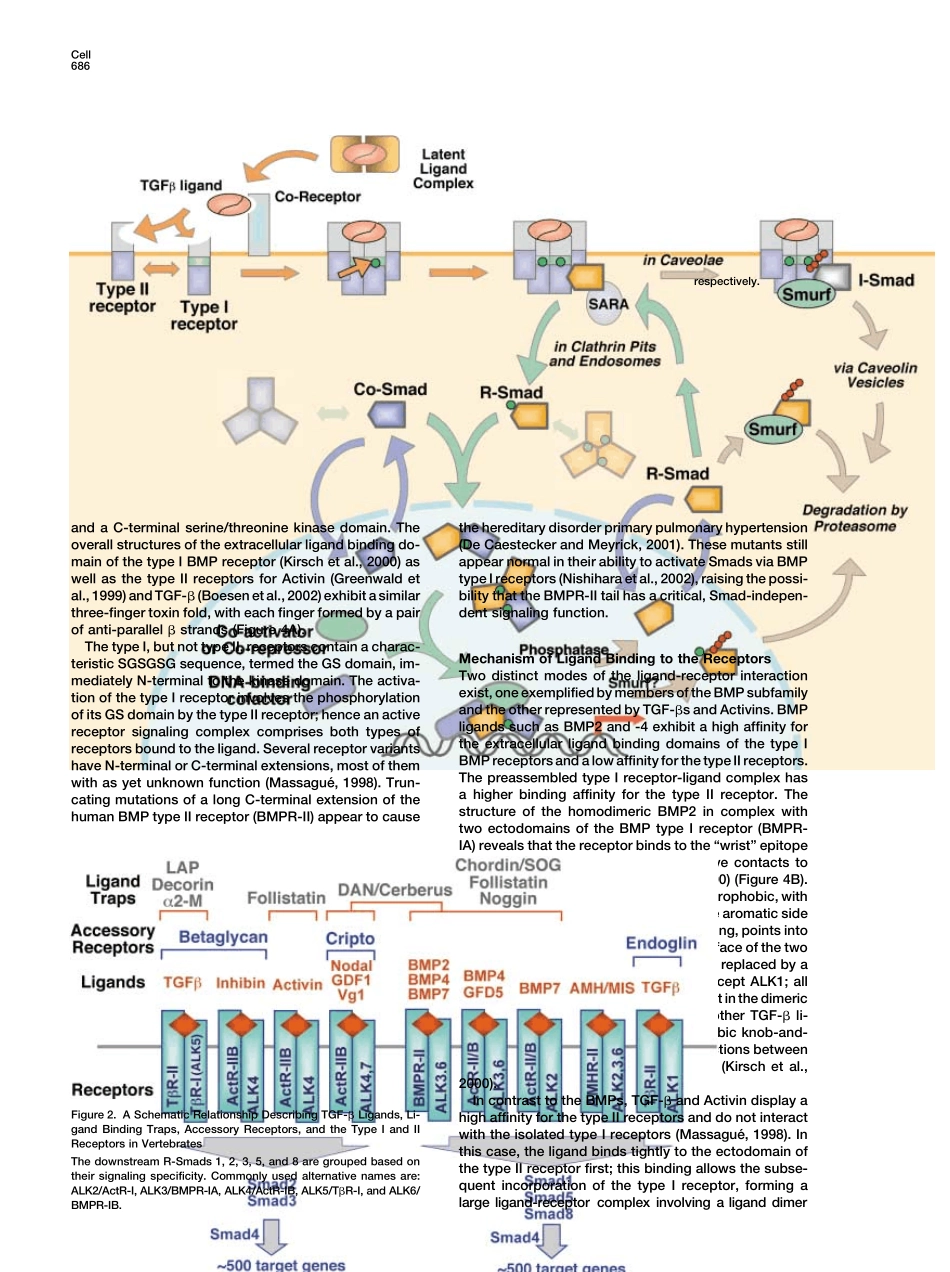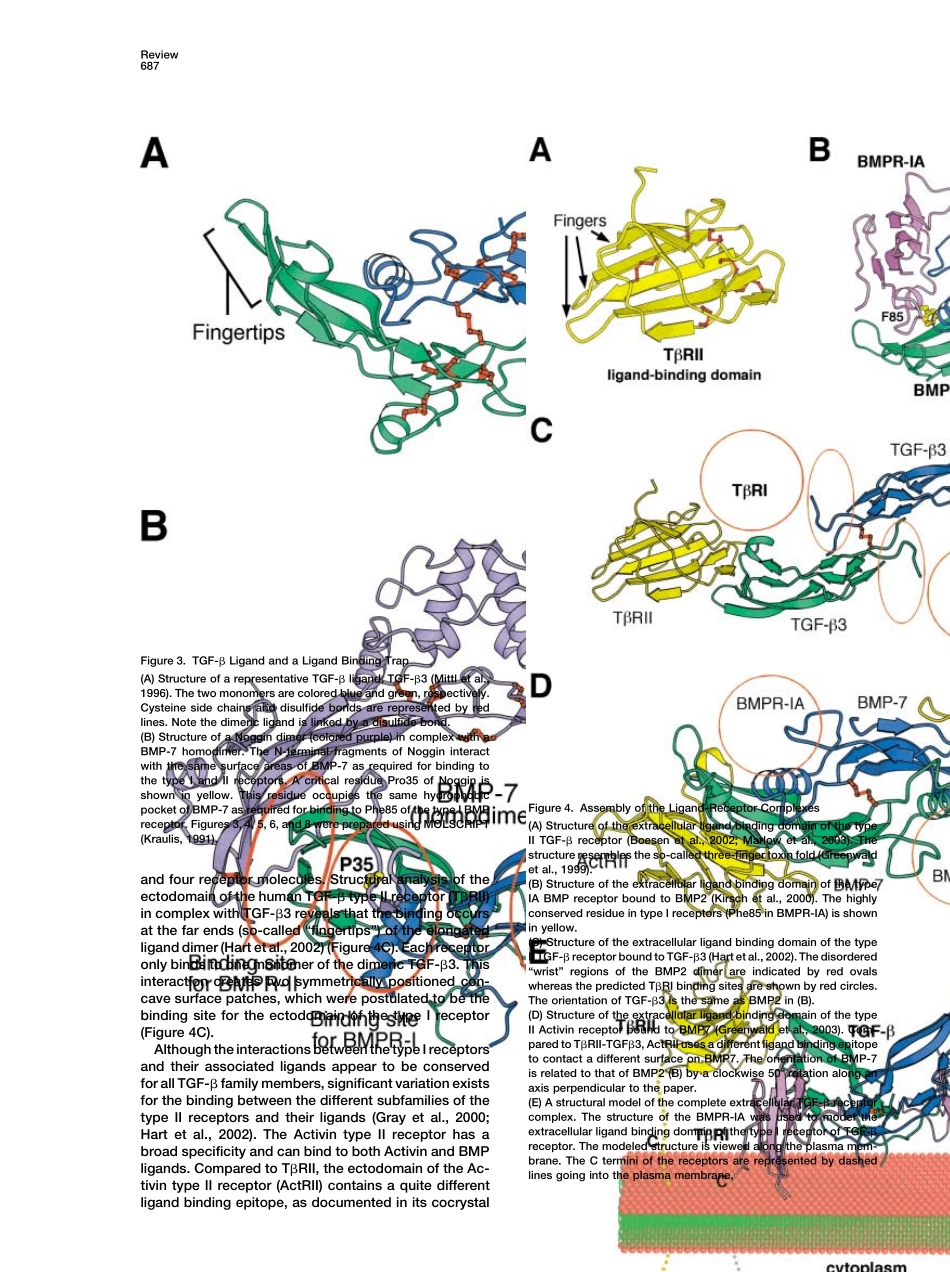Cell, Vol. 113, 685–700, June 13, 2003, Copyright 2003 by Cell PressReviewMechanisms of TGF- Signalingfrom Cell Membrane to the Nucleushave been observed in both TGF- family receptors andthe Smad proteins. The TGF- type II receptor is inacti-vated by mutation in most human gastrointestinalcan-Yigong Shi, 1,* and Joan Massague´2,*1Lewis Thomas LaboratoryDepartment of Molecular BiologyPrinceton Universitycers with microsatelliteinstability and Smad4 in nearlyhalf of all pancreatic carcinomas. Many other somaticWashington RoadPrinceton, New Jersey 08544and hereditarydisorders are a result of mutations ormalfunctionsin the TGF- pathway (reviewed in Mas-2Cell Biology ProgramHoward Hughes Medical Institutesague´ et al., 2000). Naturally occurring disease muta-tions in Smads and TGF- family receptors have enor-Memorial Sloan-KetteringCancer CenterNew York, New York 10021mously facilitatedthe analysisof the structureandfunction of these proteins.Over the last decade of intense investigation,manykey events in TGF- signaling have been documentedTGF- signalingcontrolsa plethoraof cellularre-sponses and figures prominentlyin animal develop-at the molecular and cellular level. An earlier focus onthe cell biological characterizationhas now been com-ment. Recent cellular, biochemical, and structural stud-ieshaverevealedsignificantinsightintothemechanismsplemented by biochemical and structural investigation,giving rise to an unprecedented level of clarity in severalof the activation of TGF- receptors through ligandbinding, the activation of Smad proteins through phos-aspects of the signal transduction process. In this re-view, we focus on the molecular mechanisms of TGF-phorylation, the transcriptionalregulation of targetgene expression, and the cont...


